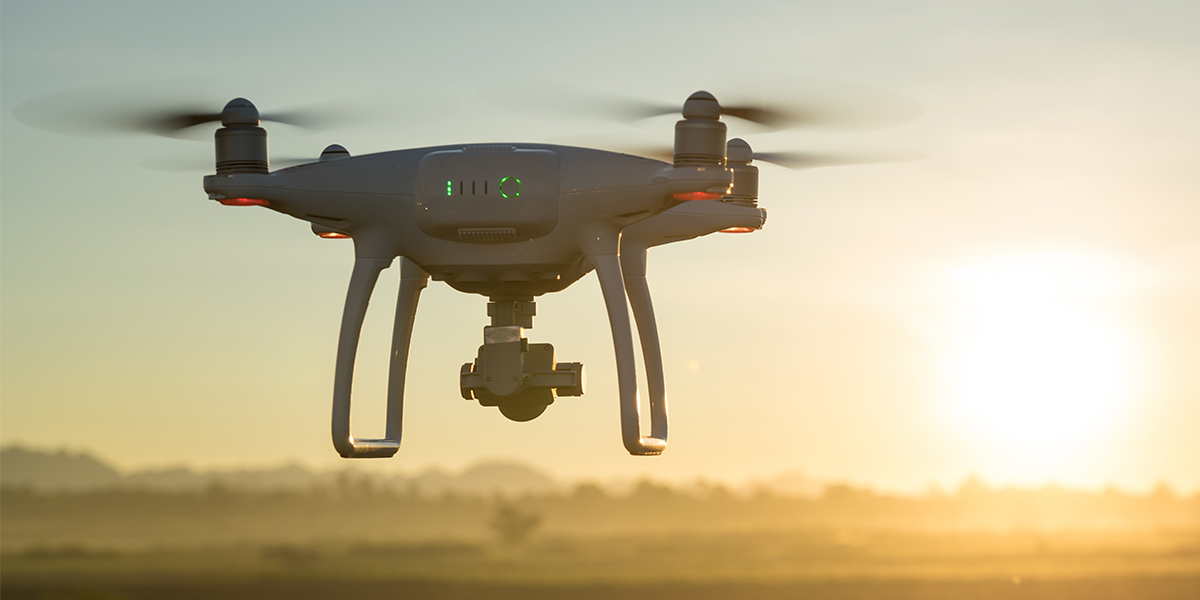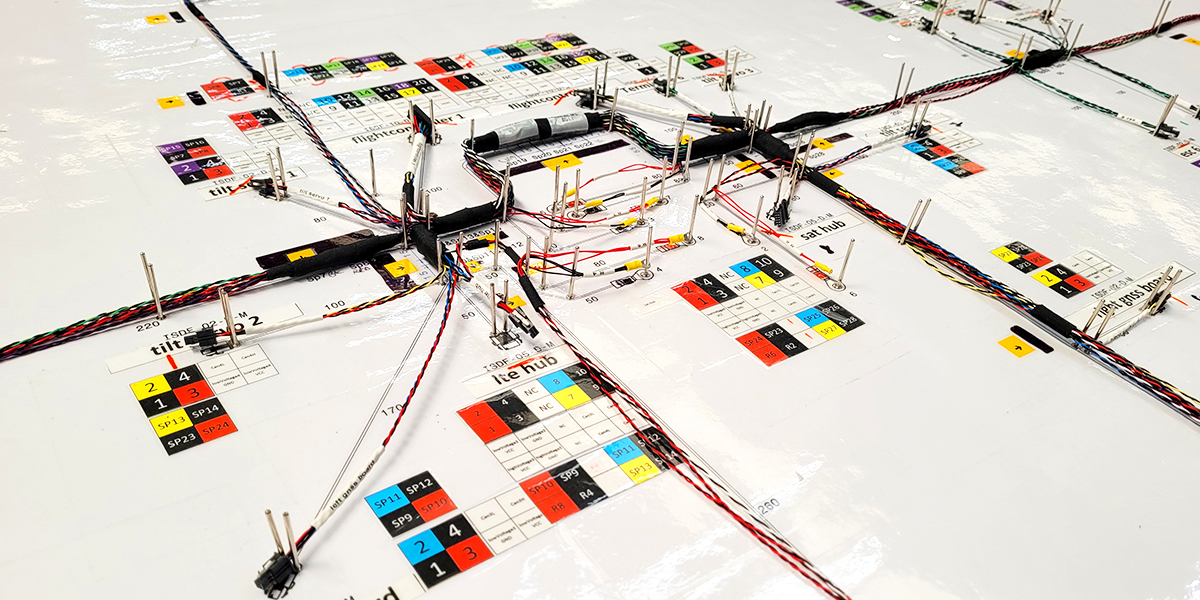Cable Assembly Solutions for UAVs
February 24, 2025 / Blog , Cable Assemblies
Today’s modern aircraft and unmanned aerial vehicles (UAVs) have sophisticated electrical systems that involve complex wiring.
Our ability to provide specialised cable assemblies for UAV design has made us the partner of choice for companies manufacturing these devices for the medical and military sectors, as well as many more. Learn more about our credentials for providing cable assemblies for UAVs.
What are the considerations when designing cable assemblies for UAVs?
Today’s UAVs boast more functionality than ever; the transition to AI-orientated systems, next-generation sensors, and the handling of payloads with complex data transmission requirements have led to the need for new cable and interconnect solutions to keep pace with this rapid development.

An unmanned aerial vehicle (UAV) in flight.
The cables and connectors used in a UAV must minimise size and weight while being able to withstand extreme environmental stressors. These stressors typically include:
- Vibration
- Shock
- Temperature
- Moisture
- Dust
- and more.
The considerations for space and weight when connecting propulsion systems, power sources, flight controls – and often, payload management – are paramount in the design of UAVs.
Installation
UAVs require large lengths of wiring routed through their chassis to operate. For this reason, combining the wiring into formed cable looms or wire harnesses, rather than running individual assemblies, can significantly streamline the installation process and make maintenance easier as well.
Additionally, cable manufacturers like GTK who adopt a DFM approach can save time and costs but benefitting from a streamlined production process, savings which can be passed on to the OEM.
Design flexibility
Reducing the number of individual cables used in a UAV’s cabling also means a higher level of design flexibility. Cables may have to be integrated into the UAV’s chassis and airframes, meaning that complex routing requirements are common.
Depending on the UAV’s design, cables may need to flex through significant angles without becoming damaged. Fewer cables typically mean simpler routing requirements, which can enable the addition of other features that may have been impossible when using individual wiring.

A custom cable harness laid out on a loom board.
Protection against vibration
Another consideration for custom UAV cable assemblies is the addition of robust outer cable protection. Shock and vibration are two huge factors in UAV operation and could cause cables to rub against sharp corners and other surfaces.
Reinforcing the outer sheathing reduces the likelihood of structural weaknesses becoming a risk. This also means the likelihood of electrical shorts and fires is reduced.
Additional physical protection
Crucially, the conditions in which a UAV will be used are unpredictable. This means that cable assemblies for unmanned systems should be resistant to a range of substances, both interior and exterior.
Waterproofing cable assemblies to protect them from fluids such as fuel and oil may be an important consideration. With this in mind, cable assemblies may need to be designed to meet specific IP (ingress protection) rating requirements for moisture and immersion resistance.
IP ratings are particularly important for UAVs used in offshore or maritime applications, as well as other forms of unmanned vehicles, such as USVs (unmanned surface vessels), ROVs (remotely operated vehicles) and AUVs (autonomous underwater vehicles).
EMI shielding
Often, UAVs and unmanned systems contain a large number of components and electronics that can emit radio frequency (RF) and electromagnetic radiation.
We can address this at the design stage with RF cable assemblies that protect against electromagnetic interference (EMI). This will prevent the UAV’s components from picking up unwanted noise and radio interference.
Certain UAVs, such as those used in the military sector, may have to conform to specific EMI requirements as standard. It’s important for OEMs supplying into this market to work with AS9100-approved manufacturers, like GTK.
Further customisation
When you choose GTK as your cable assembly manufacturing partner, you can benefit from our extensive customisation capabilities. By synergising processes across our global manufacturing locations , we can create custom cable assemblies for every element of a UAV design.
From battery interconnects to flight controllers, autopilots, and mission control systems, we offer a wide range of insulation, conductor and connector options.
We can also put together unique testing regimes based on your specific requirements, testing your cables to ensure that they will survive demanding environments and thousands of flight hours without failure. For this, we use methods such as high-voltage testing, insertion loss testing and pull force testing.
Our wire harnesses can be further customised to meet specific application and aesthetic and traceability requirements, with options including:
- Identification markings
- Custom colours or shielding
- Custom barcoding or labelling
- Assembly lacing
- Cable tie, wire management
- Heat-shrink coatings
- Insulation materials
Take a look at a real-world example of GTK collaborating with a UAV manufacturer
Contact us
Need to know more about cable assemblies for UAVs, the service GTK offers and the right course of action for you?
Our expert team are on hand to help; contact us today to discuss your specific project’s requirements.